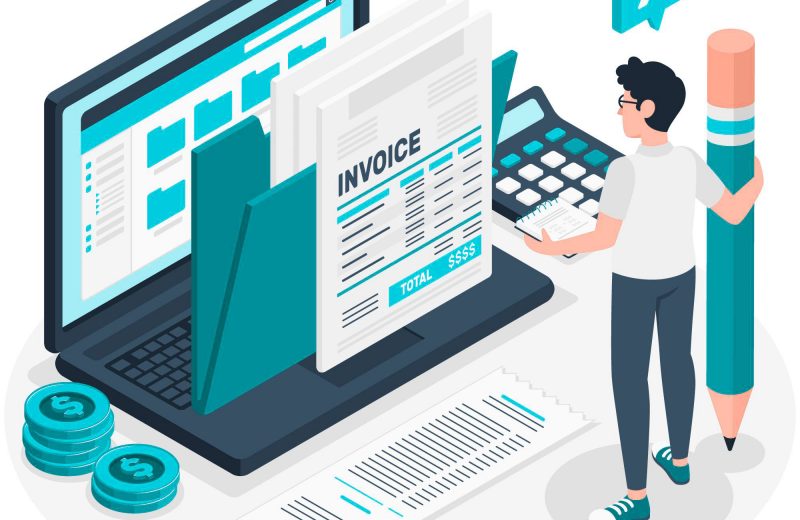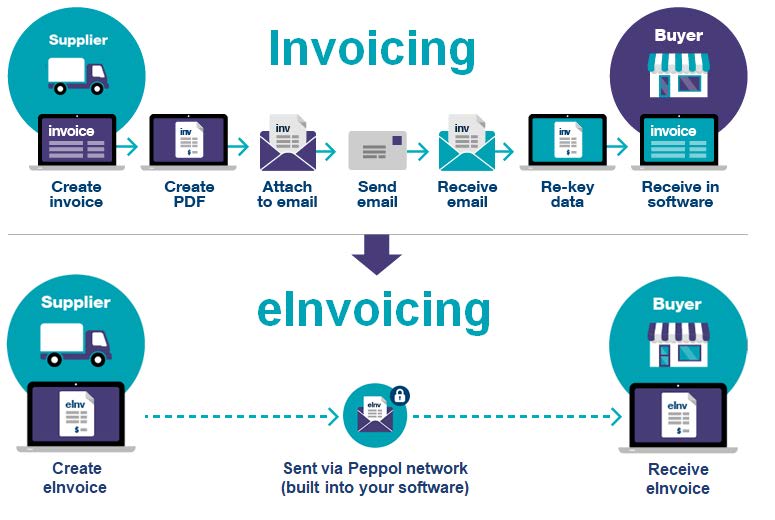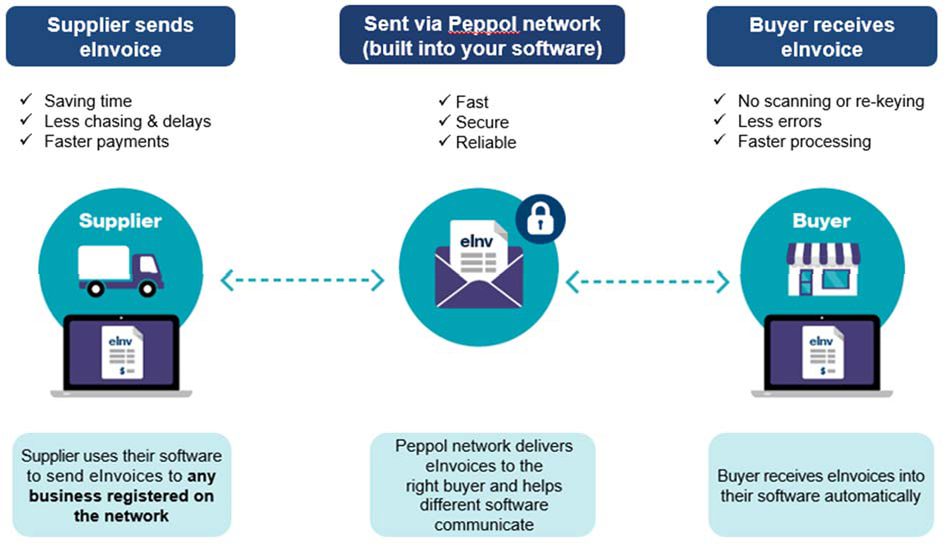eInvoicing explained
eInvoicing is the new, easy and secure way to send and receive invoices between buyers’ and suppliers’ software. It is different to sending PDF invoices in your software or by email.
Using eInvoicing is like using a mobile phone service. Once you select a provider and get connected to the network, you can exchange invoices with anyone on the network, using their ABN. This reduces the chance of scams or fraudulent invoices.
eInvoicing allows suppliers to easily create and send invoices using their software and know immediately if the invoices have been delivered successfully. This means they can quickly fix any errors that may occur and resend, saving you both time and hassle.
Customers no longer need to manually enter or scan paper or PDF invoices into their accounting system. Invoices automatically appear in their system, ready to be reviewed, approved and paid.
To find out more about eInvoicing, visit ato.gov.au/eInvoicing.
The benefits of eInvoicing include:
- time and cost savings by reducing manual data entry, as invoices appear in your software, ready
to be paid - not having to fix errors, chase missing information or lost invoices
- getting paid faster and improving your cash flow
- reducing the risk of scams and fraud
- supporting the environment by reducing your consumption of energy, storage space and printing supplies.
How eInvoicing works
What makes eInvoicing possible is the Peppol standard that allows invoice data to be exchanged between different software or systems.
Australia has adopted Peppol as a common standard for eInvoicing. Peppol is an international framework used in 40 countries around the world, including throughout the EU and New Zealand, Singapore and Japan in our region. As of June 2022, more than 15,000 businesses in Australia are using eInvoicing with more starting every day.
To start eInvoicing, your software needs to be connected to the Peppol network. Many software providers already offer eInvoicing. Accredited eInvoicing products may not refer to Peppol directly but all are using the network. It doesn’t matter which software you and your trading partners use to invoice, eInvoicing will work as long as you’re both connected to the Peppol network.
In Australia, the ATO is the Peppol authority responsible for ensuring that the eInvoicing standards are implemented consistently by all software providers in the eInvoicing network. The ATO does not receive any information sent through the Peppol network and can not see any eInvoicing data.
The ATO’s role
The ATO has been appointed as the Australian Peppol Authority by the Government. In this role the ATO ensures that the eInvoicing standard is implemented consistently by all digital service providers in the eInvoicing network. It also ensures security protocols are followed and organisations participating as access points are trusted entities.
The ATO also promotes the key benefits of eInvoicing for businesses, such as saving time, reducing the risk of fraud and scams, and improving business efficiency and driving adoption throughout the entire economy. By promoting eInvoicing and it’s benefits we are working with Australian businesses to help them become more efficient, more resilient, and better prepared to compete in an increasingly digitised world.
The ATO does not receive any invoicing information. eInvoices are transmitted securely through the Peppol network directly to the recipient. Information is not made available to the ATO.
To get started or learn more about eInvoicing visit ato.gov.au/eInvoicing.




